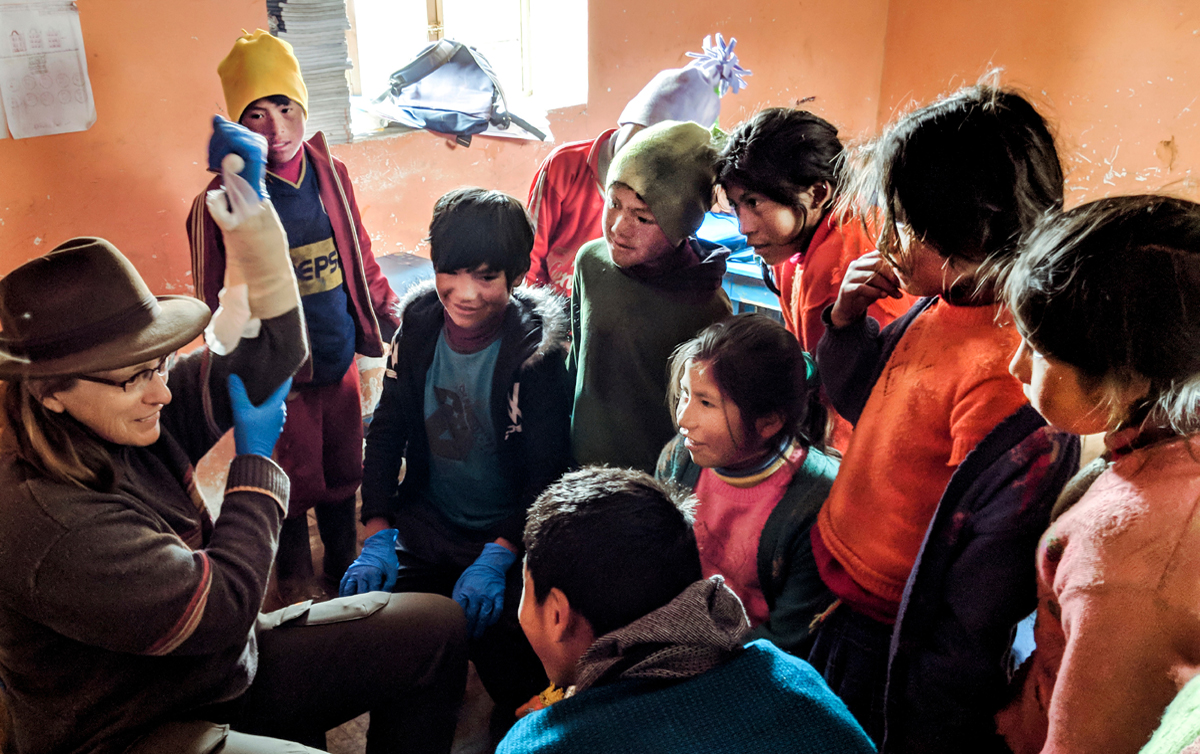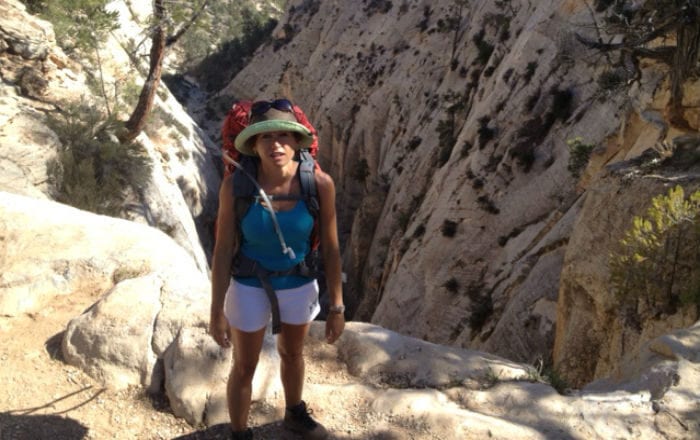
Heart Walk Foundation expedition volunteers help Q’ero villagers high in the Andes
By Stacy Christensen
While southern Utahns were sweltering in the summer heat, six dedicated volunteers from Heart Walk Foundation in the USA and Heart Walk Foundation Peruvian field director Bertha Ramirez trudged at high elevations in two feet of snow to deliver supplies and services to isolated Q’ero villages in Peru.
It was the 18th expedition since the founding of Heart Walk Foundation in 2004. Heart Walk Foundation, a St. George-based volunteer nonprofit organization, partners with indigenous Q’ero mountain communities in the Andes of Peru. These people live at the highest habitable altitudes in very harsh conditions.
After months of training for the rigors of hiking at high elevations, the expedition team fulfilled its commitments to deliver school equipment, art materials, warm clothing, and medical supplies to three remote Andean villages where life is a challenge every day of the year.
For many months, the team of volunteers planned for the July expedition from their homes across the U.S. They collected donated goods and prepared service activities in their respective fields of education, art, culture, hygiene, and health care.
Once in the villages, the six volunteers put their passions and talents into action.
Brian Lehr of Hendersonville, North Carolina, a nurse, taught wound care in each village and treated several people with chronic wounds. He also introduced a simple hand-wash setup for each village that was very well received. In each village, men lined up with their own recycled materials to learn how to build hand-wash stations for their families.
Brian’s wife Beth Ann Lehr, a director of a pre-school, trained teen girls to use fabric menstrual kits so they would not miss school during their monthly cycles. The project was received with enthusiasm, and the girls asked for more kits to take home for their mothers. She also presented hands-on lessons to youth of every village to explore the five senses. She read a picture book of her own creation and taught students to make play dough to explore taste, smell, touch, sight, and sound. This new experience captivated children and teachers alike. She also brought fleece hats made by members of the Grace Lutheran Church in Hendersonville to keep villagers warm during their winter, which is occurring now.
Cheryl McGovern of Rockville, a physician’s assistant at Dixie Regional Medical Center, trained villagers of all ages in first aid for life-threatening bleeding and broken bones. McGovern distributed wound-care kits that were funded and assembled as a service project by St. George Eagle Scout Clint Brinkerhoff and his team. The kits included splints donated by SAM Medical to the high school and to the Q’ero health promoter in each village. McGovern singled out teens to train because she wished to encourage young kids to take responsibility and contribute to the well being and betterment of their communities.
The expedition team brought science equipment to the high school, which was recently built by Heart Walk Foundation. Binoculars, a microscope, and astronomy books donated by John Kolb of Ivins held the attention of the youth who learned how to use them. The students are always eager for more educational materials. They are hungry to learn.
Team leader Stacy Christensen of Springdale and Malynda Madsen of St. George met in council for many hours with each partner village. The elders expressed their gratitude for the longtime partnership with Heart Walk Foundation and for all the accomplishments to date. Christensen and Madsen received the community’s requests for future projects, which continue to focus on food security, health and education needs, animal husbandry, and cultural preservation.
The volunteers were compelled to cut short their 10-day expedition by one day due to heavy snowfall and sub-freezing temperatures. On the last day, the team hiked many hours to the Ritti Casa Pass at 15,600 feet in elevation where they were to meet the 4×4 trucks. The vehicles, however, were unable to reach the pass, forcing the group to hike several more hours to find the 4x4s waiting on the narrow track road further down the mountain.
These challenges reminded the expedition team how the Q’ero people live on the margin of safety every day of their lives, facing constant difficulties in their harsh climate and rough geography.
The volunteers’ hike out increased their heartfelt resolve to continue this inspiring service to the Q’ero people of the Andes.



